Story and photos by Brandes Elitch
On October 28th, the Art Center in Pasadena hosted the ArtCenter Design Invitational for their alumni, famous designers, and guests, including a small display of show cars of the past, today, and the future. This has been an annual event, which began in 2002.
The Art Center itself is 75 years old. The Automotive Design Department was founded in 1948. The mission is to develop creative leaders and innovators in art and design. Their vision is to create a new model for art and design education in the 21st century, which they characterize as: “Learn to create and influence change.” I think it is fair to say that this is the most famous design college in the world.
The original campus was a group of buildings in Los Angeles, but by 1940 enrollment had grown to 500 students and they were outgrowing their site. The school moved to the Hillside Campus in Pasadena in 1976. In 2004 they established a campus in downtown Pasadena with 3 renovated buildings to accommodate growth (and that even has a wind tunnel).
The event schedule included:
-Meet The Designers: interviews with designers and their cars as they are driven up to the podium. To me the highlight was a brief talk by the son of Hennessey founder John Hennessey, about their history and the current supercar they are building. Interestingly, they also have a school, called Tuner School, which they say is the world’s only automotive technical school dedicated to teaching car enthusiasts how to modify and tune cars, sports cars, and race cars. The school is 14 weeks long, and it is licensed by the Texas Workforce Commission Career Schools and Colleges licensing program. What makes this school different is that it operates at a racetrack and it focuses entirely on high performance.
-Interviews with past and present Transportation Design leaders, including Ron Hill, Ken Okuyama, Stewart Reed, and Marek Djordjevic.
-Panel discussion on the future of supercars with Ken Okuyama, Sasha Selipanov, and Nathan Malinick
-Tours of the Transportation Design studios and a display of authentic original GM Fisher Body Craftsman Guild models going back 70 years!
Art Center alumni include leading car designers, such as Michelle Christensen, Luc Donckerwolke, and Granz von Holzhausen, as well as filmmakers, concept designers, artists, product designers, entertainment design, furniture, lighting and fixture design, graphic design, media design practices, spatial experience designers, Brand Design and Strategy, and Interaction Design.
It is the first design school to receive Non-Governmental Organization (NGO) status by the United Nations Department of Public Information.
I have been on many college campuses, but this is the only one I have seen that is practically an art installation in itself. Part of this is the isolated bucolic setting, at the top of a hill in Pasadena with a fifty-mile view of the surroundings. The sculpture garden is an ideal setting for a small car show. Just the drive up the hill to the campus from downtown Pasadena is an experience in itself, kind of like driving through the Hollywood Hills.
To state the obvious, this is an extraordinary place and a mecca for automotive designers.

I found this Aurora model of Joe’s car many years ago and gave it to him as a gift. I think it would be almost impossible to find today.
I was fortunate to be invited by my friend Joe Duray who was invited to display his 1961 Maserati 3500 coupe, with Touring coachwork. I was with Joe the day he bought this car, some 40 years ago, but I did not know until now that the original owner was the husband of Maria Callas! This is striking because Joe is a big opera fan and just this month went to NYC to see La Boheme at the Met. Over many years, Joe has carefully and meticulously restored this car and he even drives it too!
To me the highlight was the display of models that were submitted to the Fisher Body Craftsman Guild, which lasted from 1930-1968. The idea was for teenagers to compete for GM sponsored college scholarships by designing and building their own scale model, or as they were known then, “dream cars.”
It was started as a philanthropic project by the Fisher family during the Depression. It evolved in a talent search and recruiting tool for GM, and at one point there were 206 graduates working at Fisher Body Central Engineering, and 35% of GM stylists were graduates. Ultimately it became an international talent search and education program for GM, including their subsidiaries Opel, Vauxhall, and Holden.
This is a wonderful story, and fortunately there a book to tell it, called The Fisher Body Craftsman’s Guild – an Illustrated History, by John L. Jacobus.
I always wanted to be a car designer, but alas, I had no talent. However, I think I can recognize good design when I see it. As it turns out, it gets complicated very quickly. There are many definitions of good design, but I think all of them would include at least the following:
-proportion, proportion, proportion
-balance and alignment
-contrast, particularly with light, white space, and shadows
-movement, and how the car looks when it is moving
-emphasis and focus
-repetition and theme
Many of the truly great designs we admire today were done by one artist, such as Georges Paulin, Flaminio Bertoni at Citroen, Malcom Sayer at Jaguar, Gandini, Giugiaro, Fioravanti, Issigonis, Chris Bangle (Art Center graduate), Ian Callum, Robert Opron, or in a studio with a strong and talented manager, such as the Chrysler studio under Exner, and all the great prewar coachbuilders and the postwar Italian carrozzeria, including Farina, Touring, Savonuzzi, etc.
I have always believed that great design emanates from one single or primary designer, not the Harley Earl approach of dozens of stylists in a studio each one focused on something specific such as a door handle, instrument panel, hubcaps, trim, etc. Indeed, Earl could not even draw, so he delegated this to his staff of hundreds of people. The results speak for themselves, and after the disastrous 1958-1959 offerings, it took a while for his successor Bill Mitchell to get back to basics.
I think that what the Art Center does is train artists how to think commercially, so that they can get a job and make a living doing something that they love. Not many of us in life get this opportunity, but then again, not all of us are artists (and dreamers too).
We can be grateful to the Art Center for fulfilling their original mission and constantly revisiting the mission and reorienting it to our current world. This is a world-class institution.
Now let’s take a look at some of the things that resonated with me at this event.
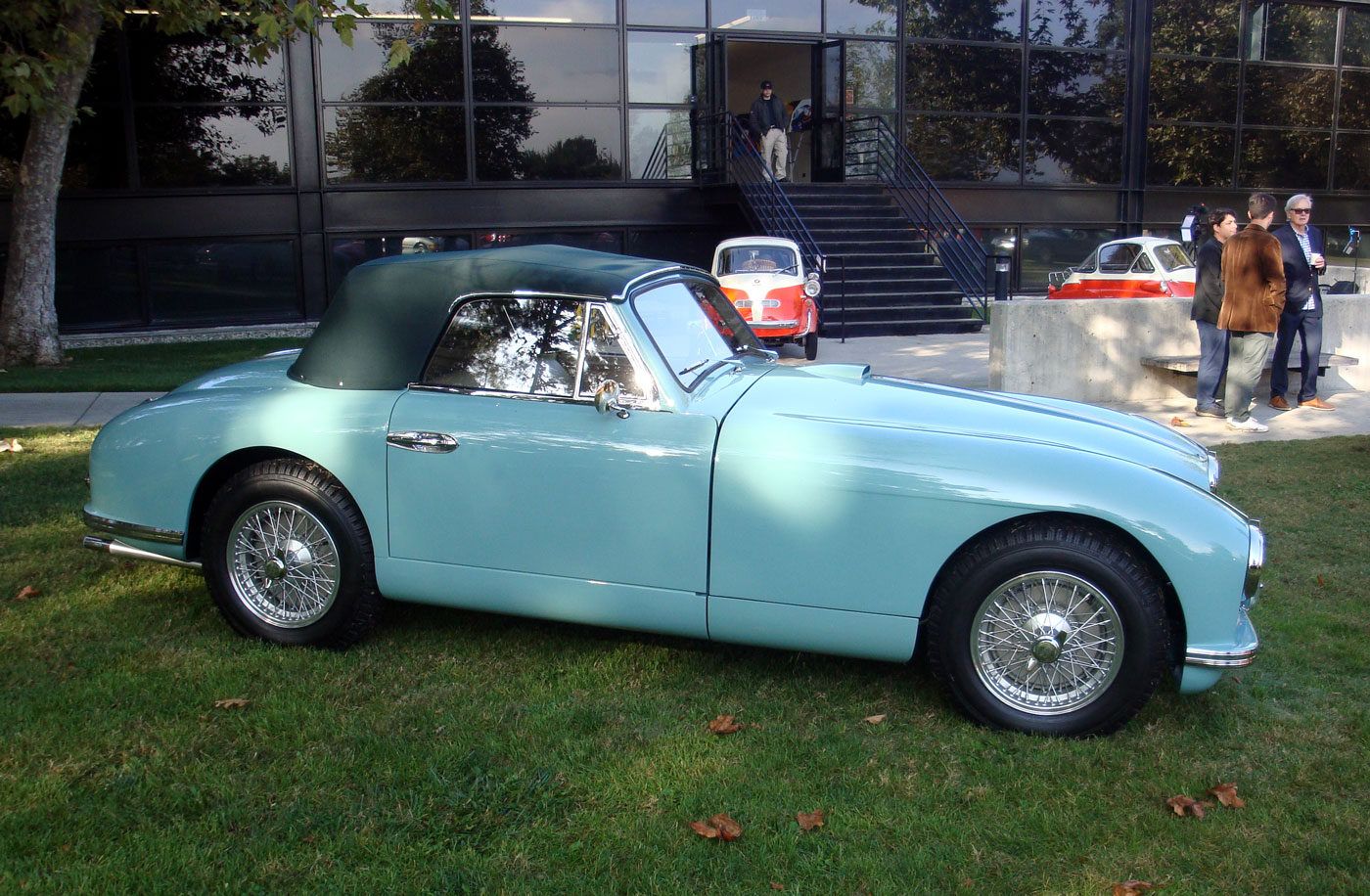
The Aston Martin is a DB2, very rare (only 411 made of which 102 were convertibles). It was produced from 1950-1953. It used a Lagonda straight six motor, a derivative of the WO Bentley and Willie Watson prewar Lagonda V12. I owned one (chassis 16041 engine 89) for forty years, so I was partial to this car.

One of the Avantis here was bought new by Rodger Ward, Indianapolis 500 winner, and it was slightly modified by him with Hallibrand knock offs. The Avanti still looks fresh and modern today.

You are wondering what this Lincoln is doing here, and so was I because I own a similar one. This was the closest thing we got to a European sports sedan back then: a SOHC V8 that gets 24 mpg, variable ratio steering, Watts linkage rear suspension, traction control, four-wheel ABS disc brakes, and of course it can go the first 100k miles without a tune-up, and then go on for another few hundred thousand miles. But this is not a Lincoln, it is a Hongqui (Red Flag) 7460, an experiment by Ford to sell these to the Chinese Communist Party leaders. Ford shipped cars to China where they got cosmetic modifications, from 1998-2005. It was not a successful experiment and only a small number were made.
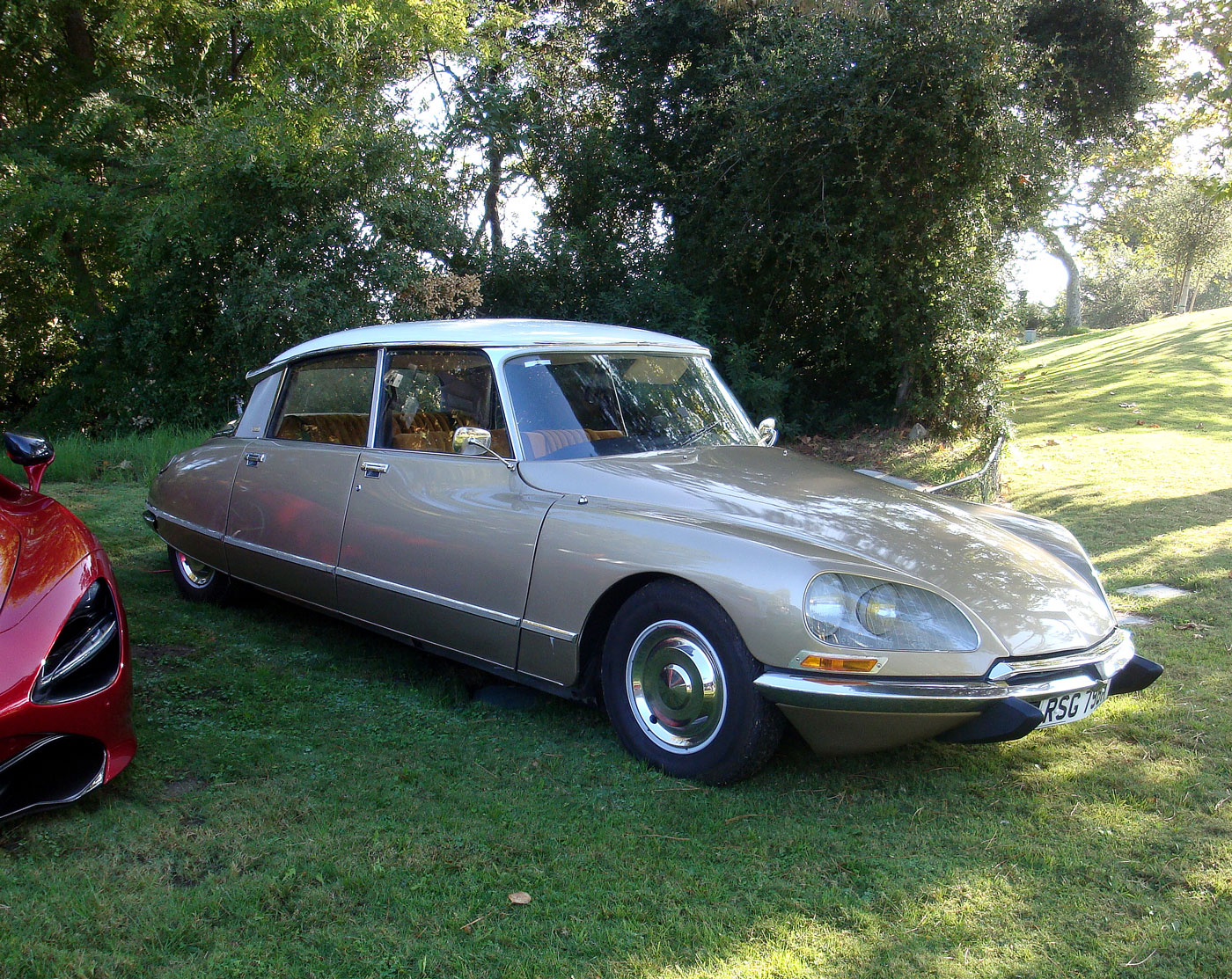
This is a US model DS Pallas, judging from the turn signals but it does have the turning headlights. I have thought about doing this to my car, but today this would be very expensive.
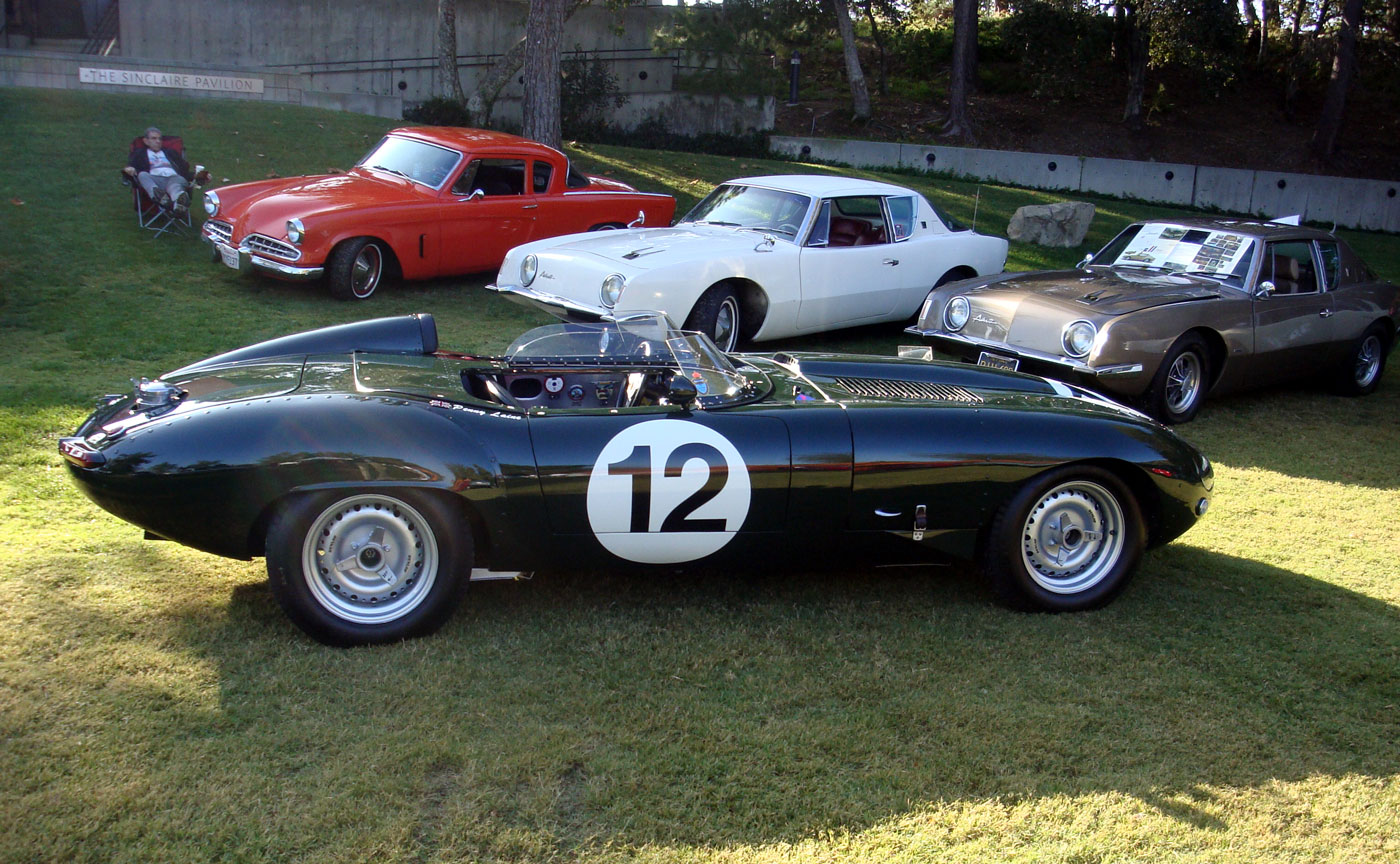
Not a D Type. This is a tribute car, although I doubt if one was originally made exactly like this – obviously quite extensively modified, but beautifully done and quite breathtaking in person.
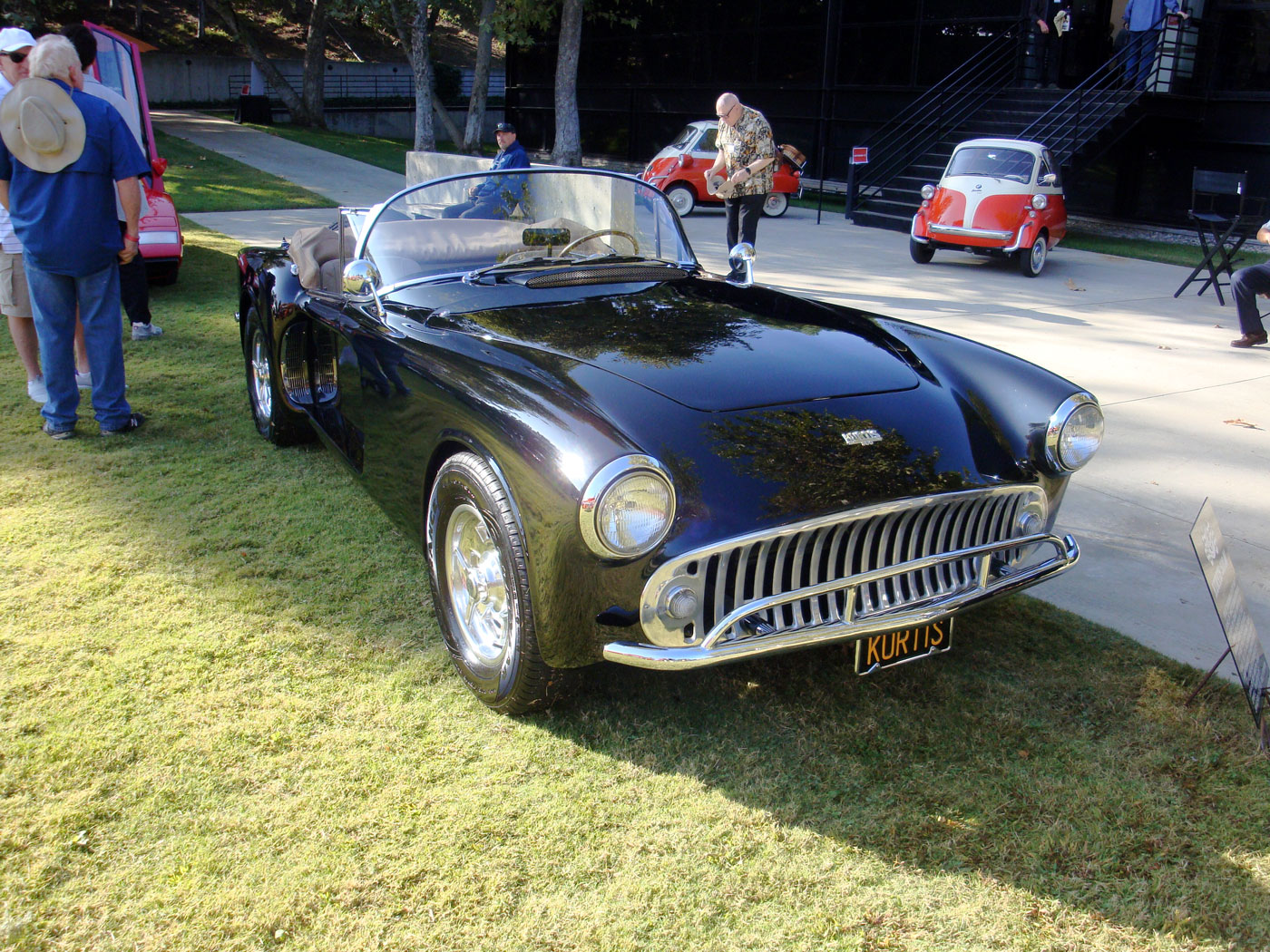
Frank Kurtis (real name Kuretich) designed and built midget cars, quarter-midgets, sports cars, sprint cars, Indy cars, and even a Formula One car. He created about 120 cars for the Indy 500, including 5 winners! He built some sports type cars under his own name in Glendale CA between 1949-1955, using Ford running gear. Supposedly, about 17 cars were made and then he sold the license to Earl “Madman” Muntz, who built the Muntz Jet.
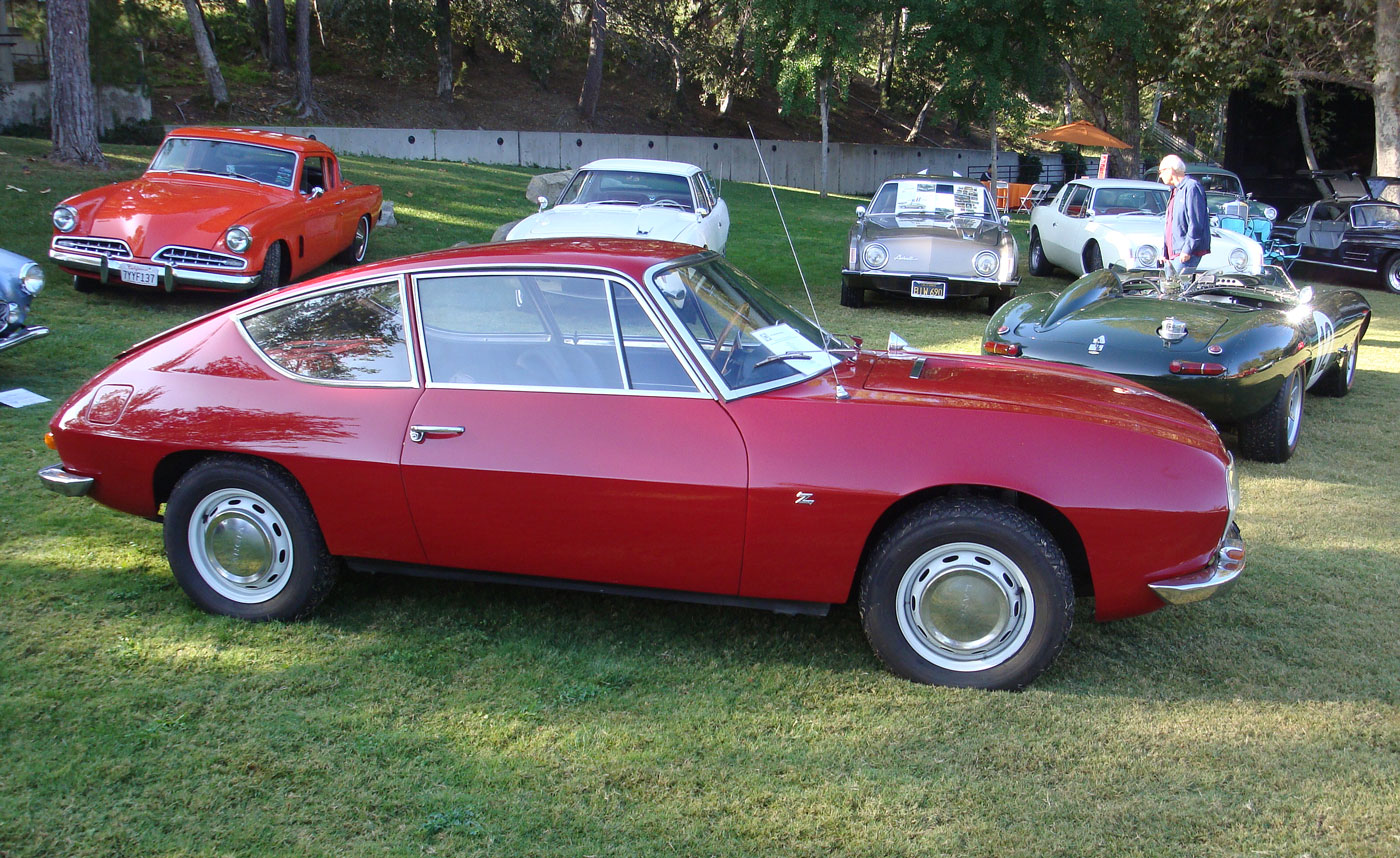
The Zagato bodied Fulvia is not as pretty as the factory production car, but then again who does not want something with a Zagato body?
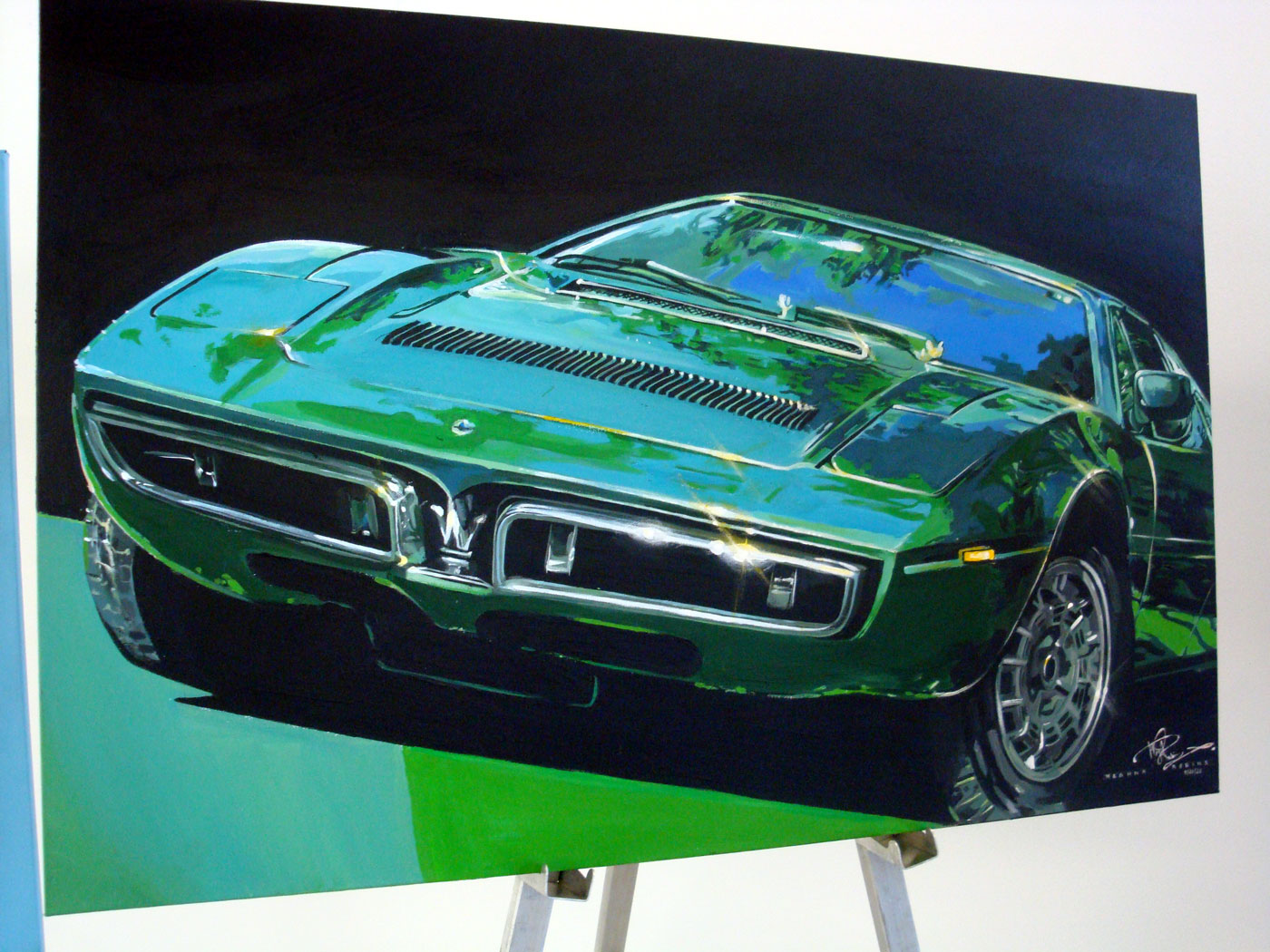
In the classroom building, there was a display of student artwork. I thought this was spectacular drawing of a Merak.

This was a Rolls Royce Phantom III convertible with a Thrupp and Maberly body, a virtually perfect restoration.
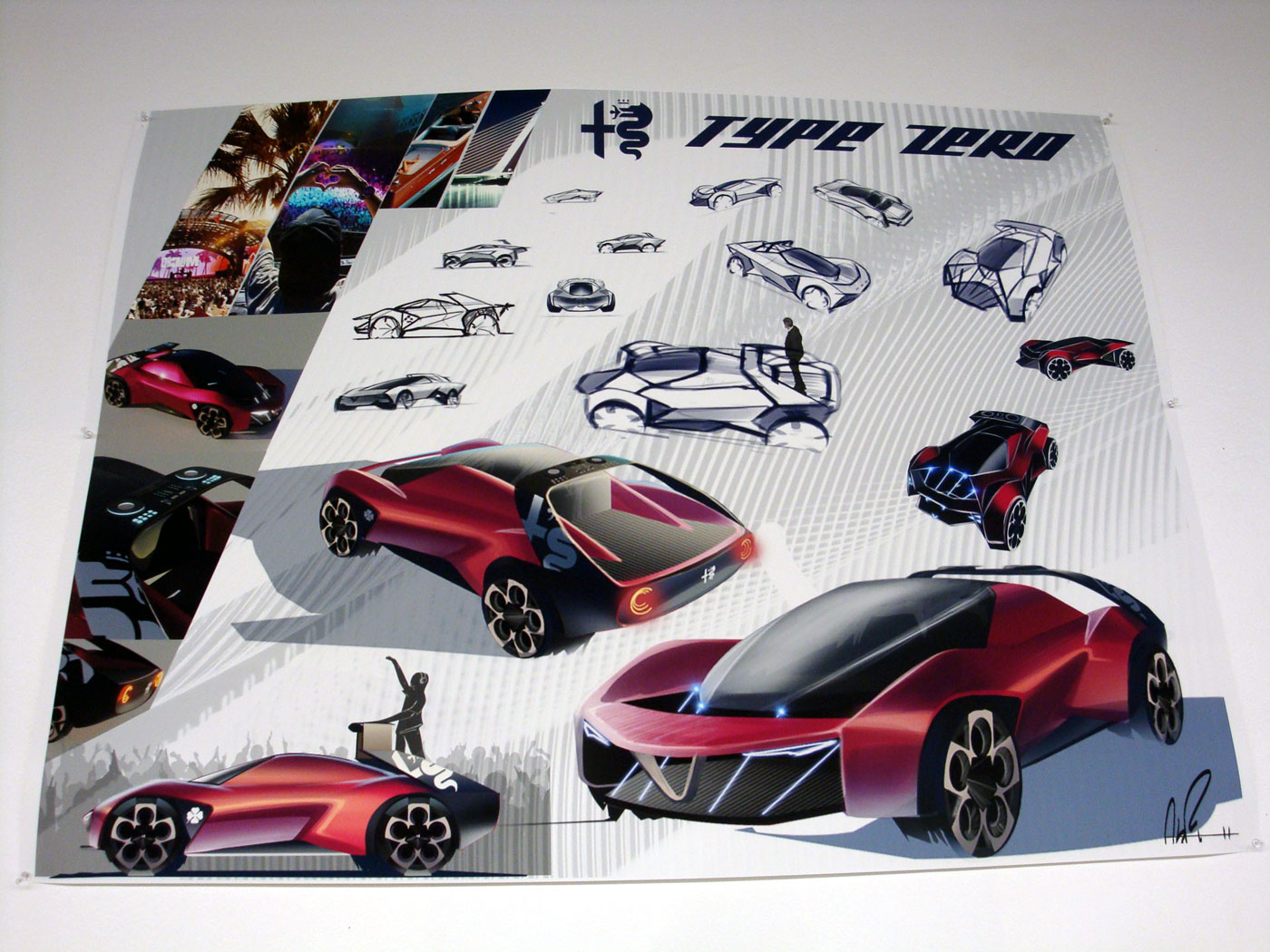
In the classrooms, many students had their own workstations complete with scale models and even large-scale posters. Here is one student’s idea for a next generation Alfa.

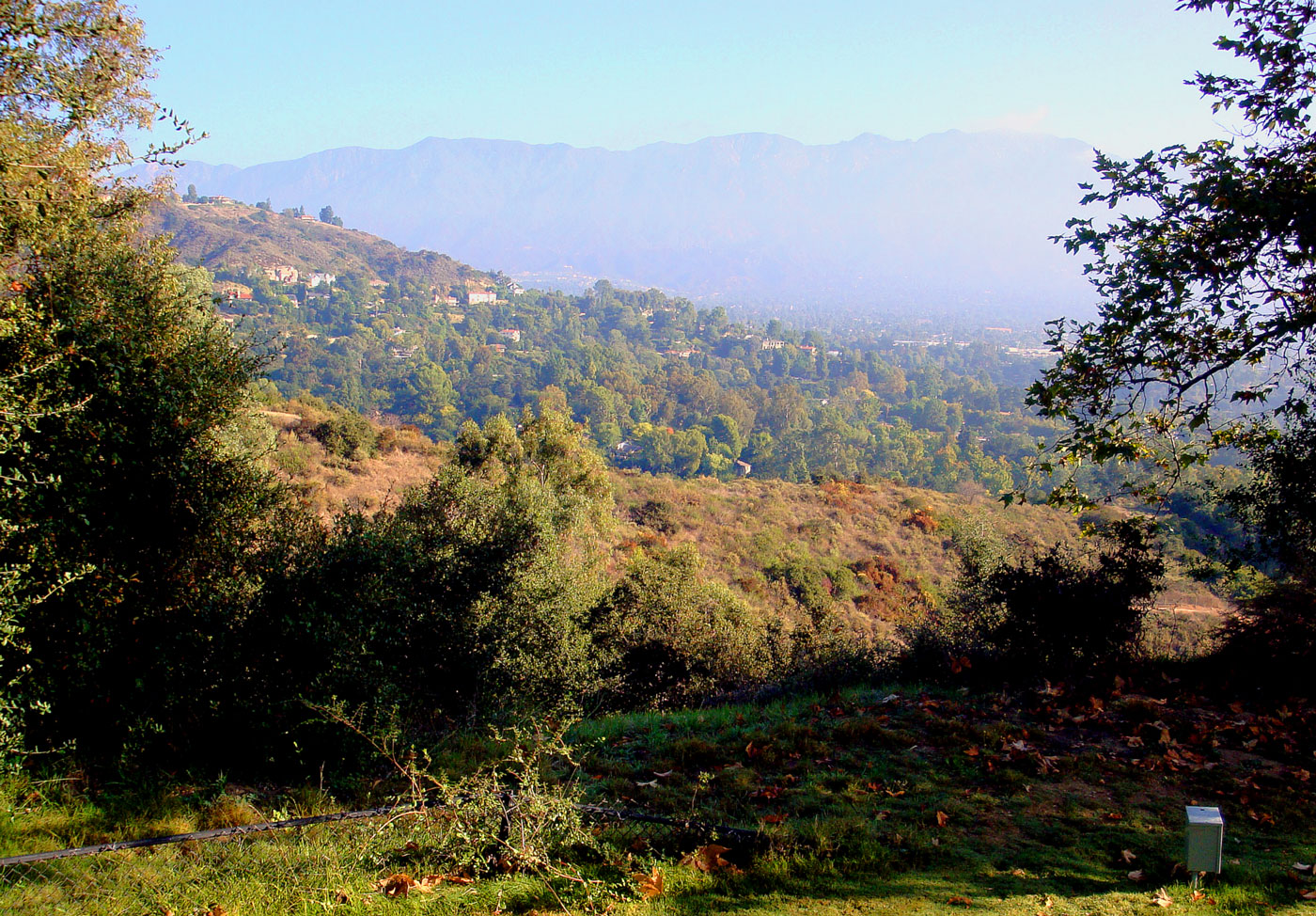
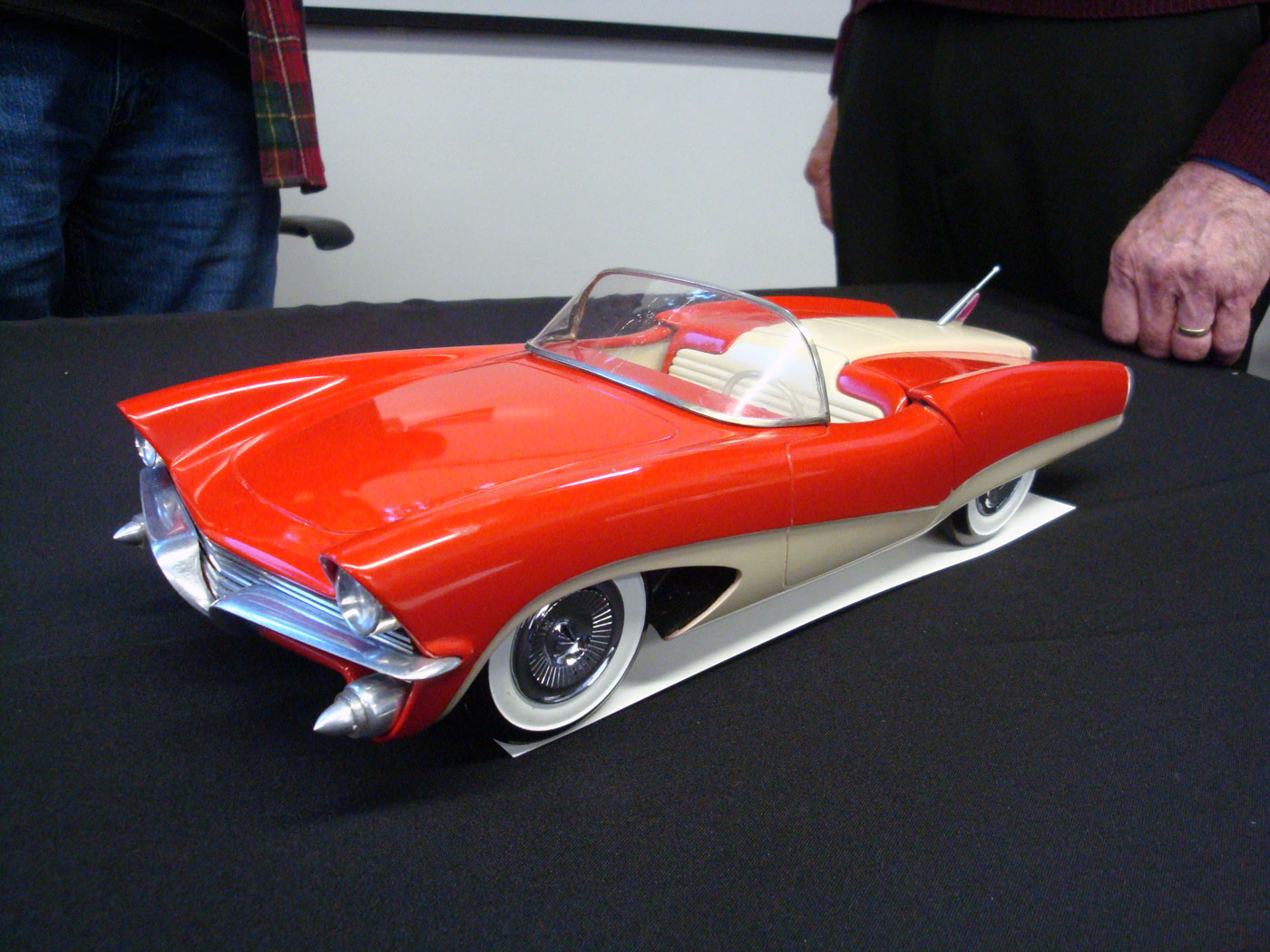

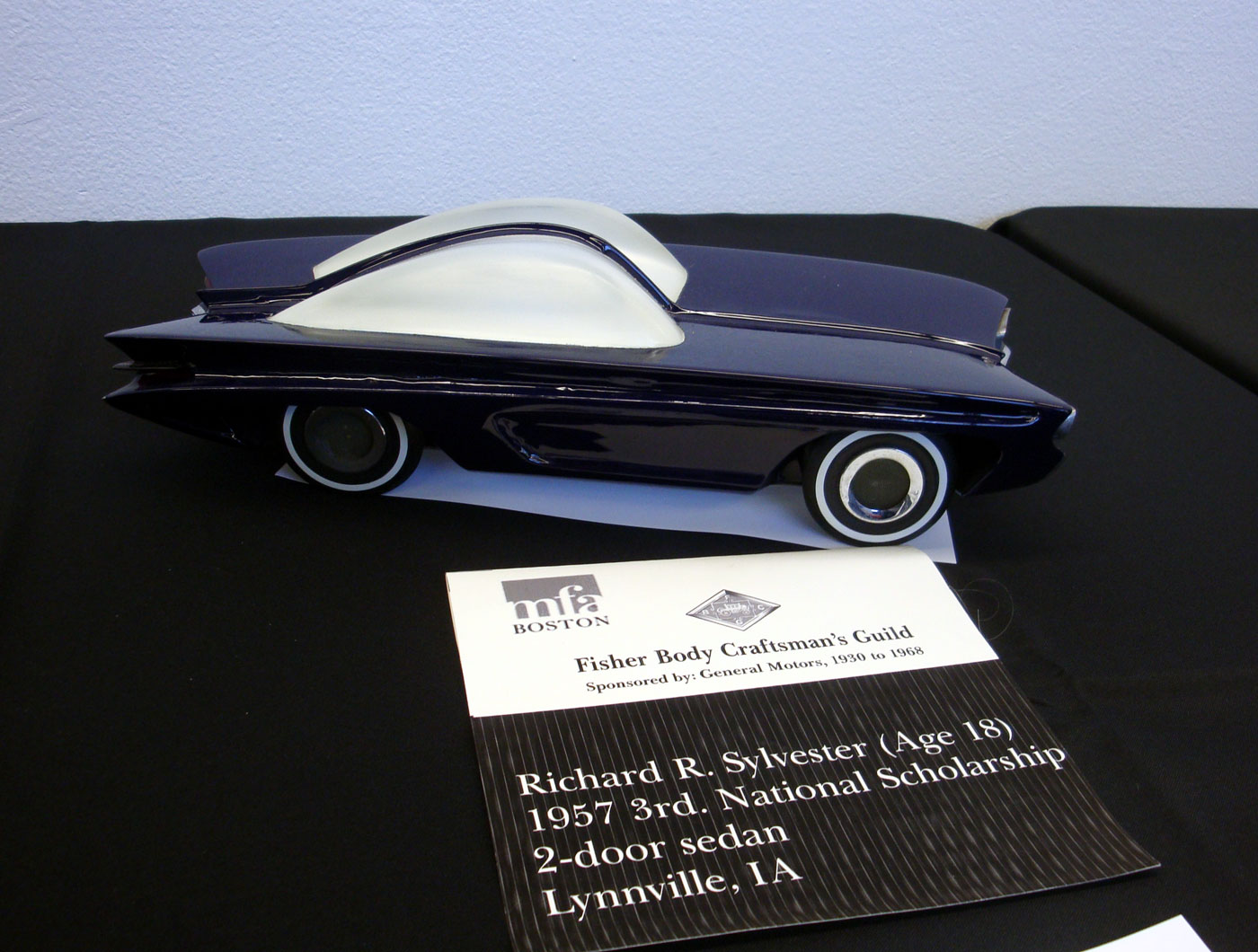
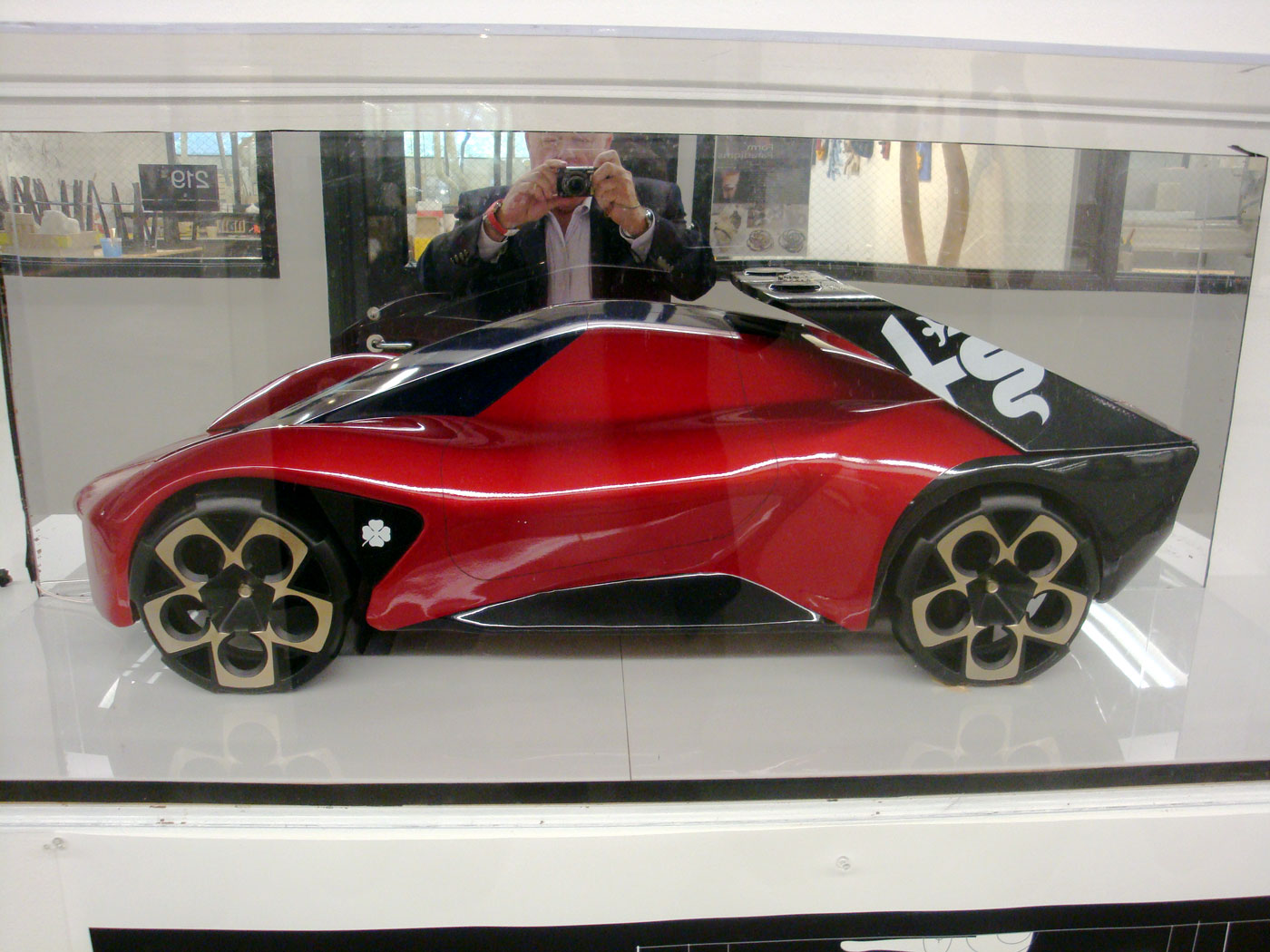
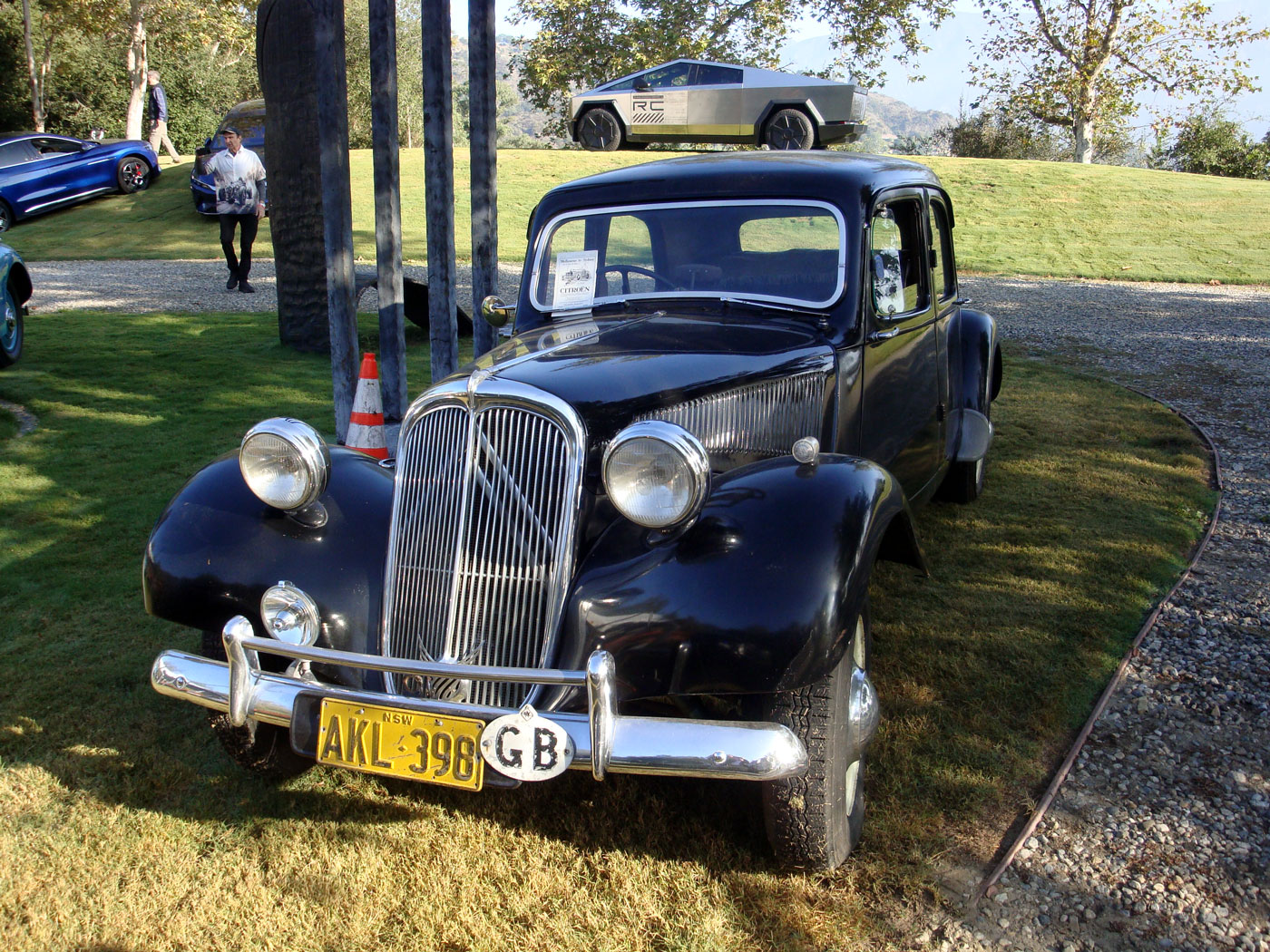

looks like touring used the same buck for the 3500 maserati hood as they did for the ironblock alfa 2000 spider of the same era! my bristol zagato and flaminia zagato have the same almost imperceptible depression on their hoods.
Hello ! It sure was a great opportunity at the time, this GM Fisher Body competition for young enthousiasts, wanting to become car designers. I personnally participated four times in Switzerland – 1965 to 1968, with first, second, third and fourth prizes and an extra one from Detroit in 1967 for excellence of design, earning my scholarships. In 1968, for my first prize, was also invited for a week’s tour at GM Technical Center, and in 1966 spent 3 weeks at Opel Styling Center. Wow, had great times and experiences.
After my studies of industrial design, practiced in Paris in many fields of product design… but seldom got back to car design !
If only such competitions could exist again, so formative !
The last photo shows the Aptera, an electric design that may enter production sometime in 2025. https://aptera.us/
I also entered the Fisher Body competition on 1966 but didn’t submit an entry. I started at ACCD at the 3rd St campus then in February of 1976 moved to the new Pasadena campus, but dropped out in ’77. In late 1979 Leonardo Fioravanti offered me a job and I started designing at Pininfarina in 1980.
That last car is an Aptera. They came out in 2008 and are about to go into production today. It is probably one of the most aerodynamic and efficient cars soon-to-be on the market. And yes, it’s electric.
I know it never rains in California, but where are the windshield wipers on Joe’s 3500GT? Judges don’t like that kind of omission. Otherwise, a good-looking car.